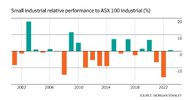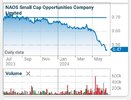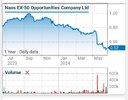- Joined
- 24 May 2009
- Posts
- 1,576
- Reactions
- 1,453
Hi What defines the small cap stocks?
Is it those stocks that are under $X when price x number of shares are calculated, and does it exclude the 'penny dreadfuls'. Do they have to be dividend payers?
Is there an accepted range that defines medium caps. Is it related to the ASX 500, ASX 300. or whatever.
I assume large cap stocks are known as the Blue Chip Stocks.
If there is a reference for these answers just post that.
Thanks and Cheers
Is it those stocks that are under $X when price x number of shares are calculated, and does it exclude the 'penny dreadfuls'. Do they have to be dividend payers?
Is there an accepted range that defines medium caps. Is it related to the ASX 500, ASX 300. or whatever.
I assume large cap stocks are known as the Blue Chip Stocks.
If there is a reference for these answers just post that.
Thanks and Cheers




